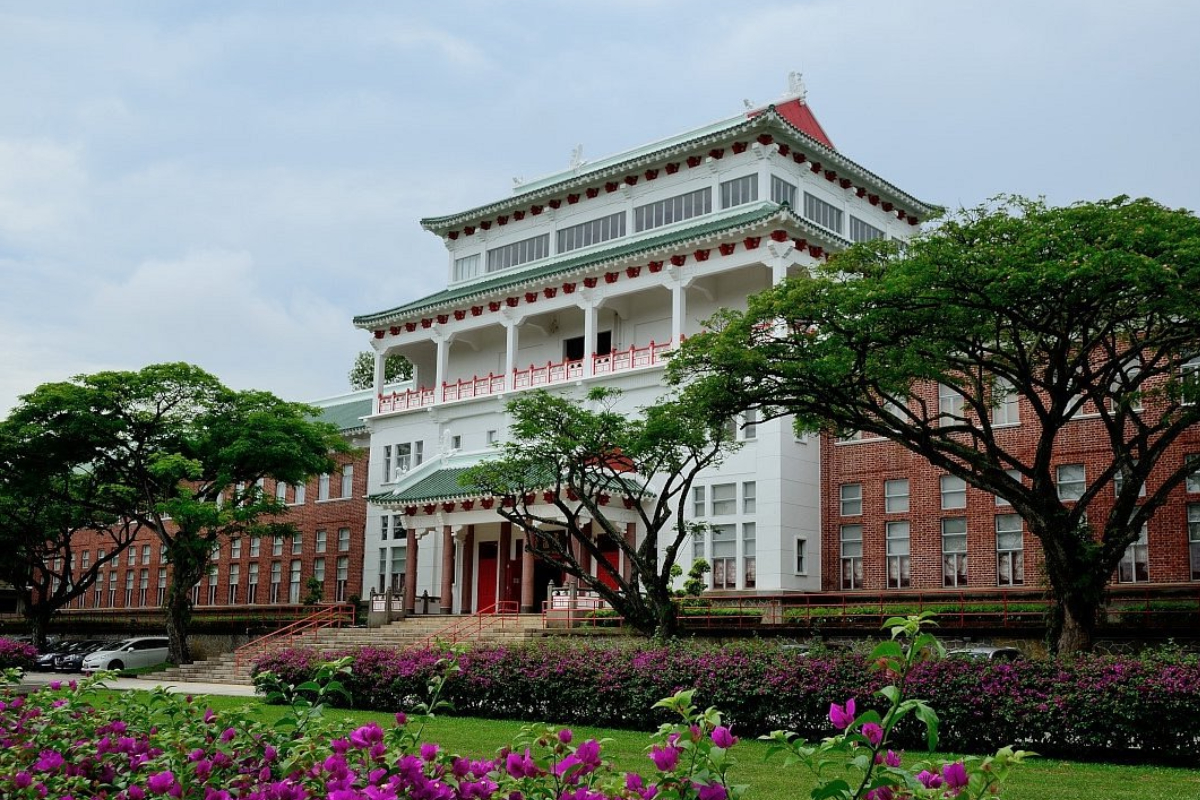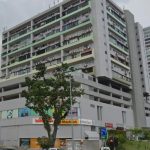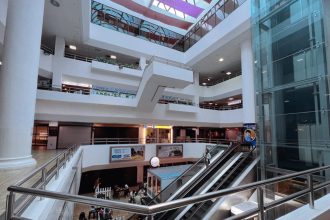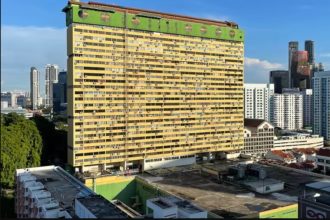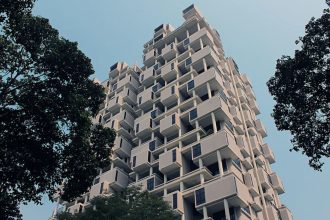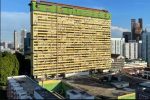Key takeaway
The Chinese Heritage Center (CHC) sits in the former administration building of Nanyang University (Nantah), a landmark in overseas Chinese education. The building, completed in 1955 and declared a national monument in 1998, now preserves the history of overseas Chinese communities and Nantah itself through exhibitions, a library and archives. Visiting it means walking through decades of heritage, identity, and community memory in one place.
The building that now houses the Chinese Heritage Center once pulsed with life as the heart of Nantah. Its walls, bricks, and roof hold stories of a community’s hopes, struggles, and spirit of solidarity. Today, it stands not just as heritage architecture but as a living space dedicated to remembering and understanding the global Chinese diaspora.
From Nantah’s heart to Heritage Hall
The former administration block was once the beating heart of Nanyang University. Students and staff filled its classrooms, offices, and meeting halls, creating a lively campus atmosphere. Its corridors witnessed countless daily interactions, from hurried lectures to casual conversations in between classes. This vibrant Chinese-language institution played a significant role in shaping Singapore’s educational landscape. Today, those same spaces have been thoughtfully repurposed. They tell stories of the past, connecting the legacy of Nantah with the broader history of overseas Chinese communities, allowing visitors to feel both the rhythm of campus life and the weight of history.
Why Nantah was built
After World War II, the growing demand for Chinese-language tertiary education inspired community leaders to establish Nanyang University. Tan Lark Sye and local clan associations, including the Singapore Hokkien Huay Kuan, donated land and funds to create the university. Construction began in 1954, and by 1955, the building that now houses the CHC opened.
Funding came from both prominent business leaders and everyday workers. Contributions reflected the shared belief in preserving cultural identity through education. The project also connected with broader cultural initiatives, such as Singapore’s Chinese heritage park, showing the diaspora’s interest in sustaining heritage across multiple spaces.
Original purpose and design
The building originally served as Nantah’s library and later as the administrative block. Architect Ng Keng Siang blended traditional Chinese design elements with modern construction techniques. Rooflines, eaves tiles, and the exposed brick façade combined Eastern aesthetics with 1950s structural methods, symbolizing the university’s mission to integrate Chinese heritage with modern education.
Its presence strengthened the sense of community. Nearby historical hubs, like the historic Chinatown centre, shared this vision of community-centered spaces celebrating overseas Chinese culture.
What the Chinese Heritage Center is today
After Nantah closed in 1980, the old administration block gained a new purpose, allowing its legacy to continue in a different form. In 1995, it was reopened as the Chinese Heritage Center, dedicated to preserving and sharing the history of overseas Chinese communities and the story of Nantah itself. The building, along with the original arch and memorial, was gazetted as a national monument in 1998, ensuring protection for future generations and allowing visitors to connect directly with Singapore’s educational and cultural past.
What you’ll find inside Chinese Heritage Center
The CHC functions as a museum, library, and research centre, providing a space where heritage meets scholarship. Exhibitions include Chinese More or Less, which examines the identity and contributions of overseas Chinese communities, and the Nantah Pictorial Exhibition, featuring photographs, memorabilia, and personal accounts from students and staff. Visitors can also explore the Wang Gungwu Library’s extensive collection of Chinese-language textbooks, historical documents, and academic works, making it a valuable resource for researchers and anyone interested in cultural history. Guided tours and educational programmes are occasionally offered, helping visitors gain deeper insights into the building’s significance and the community it served.
Key facts about the heritage buildings around the Chinese Heritage Center
The Chinese Heritage Center is part of a cluster of heritage buildings that together tell the story of Nanyang University and the overseas Chinese community. Understanding these structures helps visitors see how architecture, design, and history intersect on this site.
| Building | Key facts | Nearest MRT | Sources |
|---|---|---|---|
| Chinese Heritage Centre (former Nanyang University Administration Building) | 4 storeys, completed 1955, gazetted national monument 1998 | Boon Lay / Pioneer MRT (via bus) | NTU |
| Nanyang University Arch (replica at Yunnan Garden) | Original entrance arch, replica unveiled in 1995 | Near Chinese Heritage Centre | Roots |
| Nanyang University Memorial (in Yunnan Garden) | Tower Memorial was unveiled in 1958 to mark phase completion of the Nantah campus | Near Chinese Heritage Centre | Wikipedia |
Why the Chinese Heritage Center matters now
The Chinese Heritage Center actively preserves the heritage of Chinese communities beyond China. For overseas Chinese and their descendants, it provides a space to connect with roots and history. Younger generations can witness struggles for education and cultural continuity. Researchers gain access to archives, artefacts, and testimonies about the diaspora and local Chinese-language education.
Because the building itself is original, visitors experience the footsteps of those who built Nantah. Nearby examples of colonial-era student housing highlight the wider context of community and education in mid-century Singapore.
A simple path to appreciation: how to visit meaningfully
Visiting the Chinese Heritage Centre is more than walking through old buildings. Taking a little time to plan your visit allows you to fully appreciate the architecture, exhibitions, and the stories they preserve. The following steps help you experience the centre in a thoughtful and engaging way.
- Plan your visit via public transport. Alight at Boon Lay MRT station or Pioneer MRT station, then take a bus (e.g., Bus 179) to the stop near Yunnan Garden / CHC.
- Enter the former administration building. Observe the architecture, the tiles, eaves, exposed red bricks, and rooflines, features that reflect a blend of Chinese styles with 1950s construction.
- Visit the exhibitions. Browse the pictorial history and overseas Chinese identity exhibition to learn about personal experiences, community memory, and diasporic ties.
- If available, check out the Wang Gungwu Library. Even casual visitors gain a sense of the centre’s living memory.
- End with a stroll in the adjacent Yunnan Garden and around the site. The garden, replica arch, and memorial tower situate the building within a broader historical and community landscape.
What you may not know about the restoration work
Over the decades, the former Nanyang University administration building faced the typical wear of a mid-20th-century concrete structure. Exposure to the tropical climate led to concrete carbonation, weakening beams and columns, while some roof tiles and wooden window frames deteriorated from humidity and occasional termite infestations. The challenge was to reinforce the building without altering its historical character.
Conservation specialists carefully assessed every structural element, deciding on minimal intervention techniques where possible. A composite wrapping system was applied to strengthen key beams and slabs, preserving the original layout and architectural features. Wooden elements were restored or replaced with matching materials, and the tiled roof was repaired to retain the traditional silhouette. The project also included careful cleaning of the red brick façade and repainting areas in historically accurate colors.
Beyond structural concerns, the restoration aimed to balance safety, accessibility, and authenticity. Modern electrical wiring and air-conditioning systems were discreetly integrated, allowing the building to serve as a functional museum and library while maintaining its 1950s appearance. Visitors today can walk through the halls knowing the building not only tells history through exhibits but also through its own preserved fabric.
Why history lives on inside the walls of the Chinese Heritage Center
Although the original university no longer exists, the building preserves the stories of people who believed deeply in Chinese-language higher education. It reminds visitors that heritage depends on the people behind it. Walking through the CHC lets you recognise their efforts, understand the global Chinese diaspora, and reflect on identity and community. For context on the significance of Chinese-language higher education in Singapore, external resources provide further insight into its role in shaping cultural and educational identity. The preserved classrooms, corridors, and libraries allow visitors to experience the environment that nurtured generations of students. Each exhibit and architectural detail contributes to a vivid story of resilience, learning, and cultural pride.
